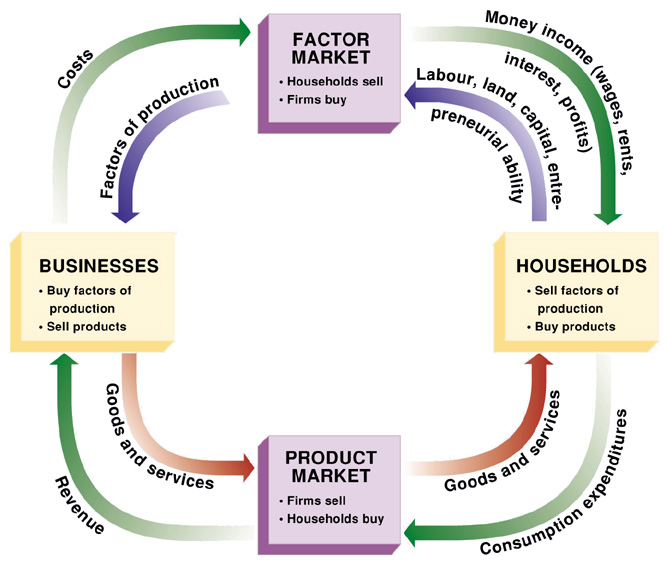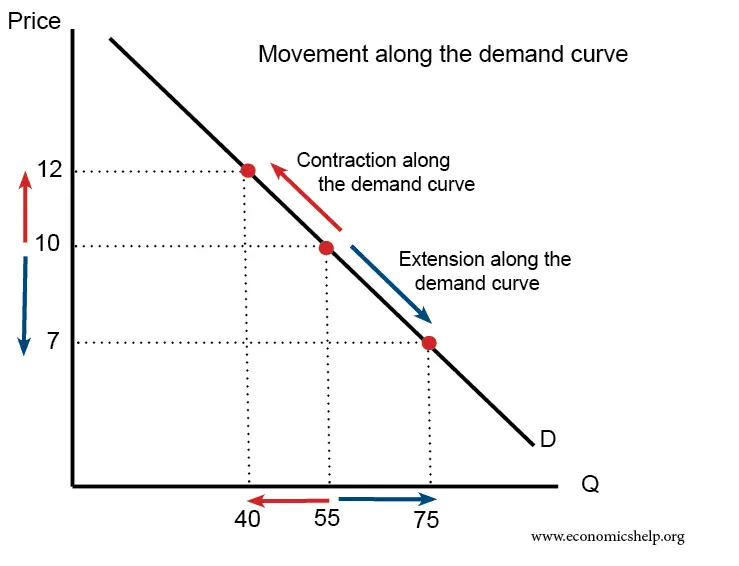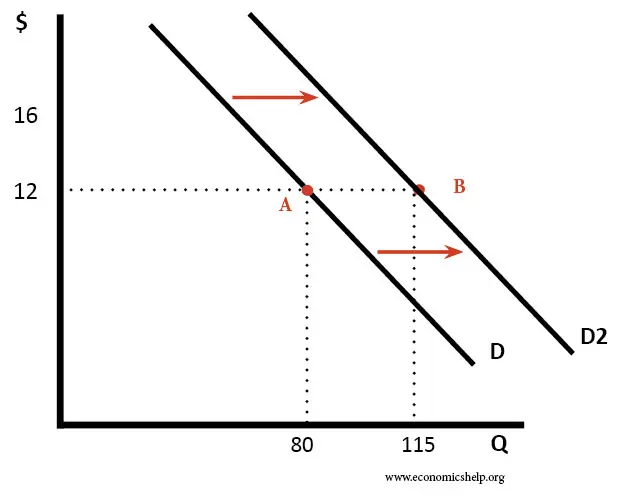microeconomics
1/53
There's no tags or description
Looks like no tags are added yet.
Name | Mastery | Learn | Test | Matching | Spaced |
|---|
No study sessions yet.
54 Terms
the economic problem
humans wants are unlimited BUT resources to fulfil such are limited.
what four questions must an economic system answer?
what to produce
how much to produce
how to produce
for whom to distribute production
subsistence economy
characterised by
self-support (i.e. you get your own food, shelter, clothes etc
rather than paying for things, you barter or trade for goods and services
command/planned economy
The government controls all businesses
The government dictates what is produced and the prices of such
typically part of “communist” political systems
free market economy
private ownership of goods and services
prices of goods and services are determined by supply and demand
part of a pure capitalist system
relative scarcity
When certain goods and services are in limited supply compared to other goods and services. in a free market economy, the prices of scarce goods are higher due to a decrease in supply
opportunity cost
the loss of other alternatives when one alternative is chosen (oxford dictionary). essentially, the value of the next best option, of which you can no longer satisfy
assumes consumers are
rational
production possibility frontier (PPF)
represents opportunity cost in a graphical manner from a business/producer perspective. i.e. if i make more of good a, how much of good b must i sacrifice? curve of ppf is a line of maximum efficiency.
production possibility frontier (PPF) assumptions/limitations
only 2 goods or services
all resources are fixed
all resources are fully employed
no change in the state of technology
resources are 100% substitutable
cost benefit analysis (cba)
measure of determining whether a project is economically viable. is done through giving benefits and negatives a monetary value. if benefits outweigh the costs, a project is typically seen as worthwhile.
the cba helps determine allocation of scarce resources by helping to identify what usage of resources maximises economic welfare and provides other benefits
how do we put monetary values on non-monetary things? (i.e. views, noise, environmental damage)
surveys
replacement costs (estimated costs of replacing/restoring lost benefits)
willingness to pay (i.e. how much would you be willing to pay to avoid a negative externality? or to use a good/service?)
Clean air isn’t sold in a market, but we can ask:
"How much would you be willing to pay each year for cleaner air in your city?"
If many people say they’d pay $100/year, economists can use that to estimate a monetary value for cleaner air by aggregating those responses.
factors of production + examples of each
land (natural resources, energy, physical land)
labour (employees)
capital (tools, buildings, things used to produce consumer goods)
entrepreneurship (technology, expertise)
increasing opportunity cost
The increase in the production of good a leads to a greater forgone production of good b.
constant opportunity cost
the trade off opportunity cost between goods/services is constant
income of resources
Income is the reward for the owners of a resource.
land = rent
capital = interest
labour = wages
enterprise = profit
mixed market economies
economies with aspects of both planned and free market economies, hence the name mixed market.
capitalist elements of australia’s mixed market economy
economic freedom (individuals choose what they do with their disposable income)
competition (more than one producer of goods and services, allowing consumer choice. hence, businesses are incentivised to offer the lowest prices to entice the most customers)
private property (individuals have the right to own private property. extends to the right of companies to own businesses and firms)
self-interest (individuals can chose what is best for them)
voluntary exchange (individuals can buy and sell goods)
profit motive (businesses and individuals are driven by a desire to make profit)
command elements of australia’s mixed market economy
government regulations on some business practices (i.e. working hours, wages, safety)
limits on certain goods/services (i.e. cannot purchase unpasteurised milk, films and games with a degree of sexual violence)
government aid to the needy (Medicare, Centrelink)
the price mechanism
the process by which supply and demand determine the equilibrium price and quantities of goods and services.
product market
markets used to exchange final stage goods and services

factor market
the market where the resources used to produce goods and services are bought and sold.

law of demand
if all else (factors) remain equal, the higher the price of a good/service, the fewer people that will demand the good/services AND vice versa. suggests an inverse relationship between supply and demand
price factors influencing demand
the price of the good/service
very easy to remember lol
non-price factors influencing demand
the price of substitute goods
the price of complementary goods
level of consumer income
expected future prices
expected future income
size of population
population age distribution
education levels
change in consumer tastes
movements along the demand curve
A movement along the demand curve happens when a change has occurred in both the price and quantity of a good/service. implies that the relationship between supply and demand has remained constant.
a movement left/up on the demand curve is called a contraction in demand
a movement down/right on the demand curve is called an expansion in demand

shifts of the demand curve
occurs when the quantity demanded of a good has changed, even though the price remains the same. implies that the original relationship between supply and demand has changed, and that quantity demanded has been impacted by non-price factors.
increase in demand = rightward shift
decrease in demand = leftward shift

normal goods
a good where as income increases, as does demand
for example, if someone goes from earning $500/week to $1000/week, they will likely increase their demand for good quality, brand name foods instead of supermarket brand.
inferior goods
a good where as income decreases, demand increases
for example, if someone goes from earning $1000/week to $500/week, they will likely increase their demand for supermarket-brand goods rather than good-quality brand-name foods
complementary goods
two goods that are typically used together. so, consuming more of one will lead to an increase in consumption of another.
for example, if there is an increase in demand for chips, there will likely be an increase in demand of tomato sauce
substitutable goods
Two alternate goods that could be used for the same purpose. therefore, an increase in demand in one usually leads to a decrease in demand for another
for example, butter and margarine
law of supply
a higher price will lead to producers to supply a higher quantity and vice versa
The relationship between the law of demand and the law of supply
The law of supply and demand states that if a product has a high demand and low supply, the price will increase. Conversely, if there is low demand and high supply, the price will decrease. Market equilibrium occurs when demand and supply intersect to create a stable price. this is the price mechanism
price factors impacting supply
the market price of a good/service
😭😭😭😭😭😭😭😭😭😭😭😭😭😭😭😭😭😭😭😭😭😭😭😭😭😭😭😭😭😭😭😭😭😭😭😭😭
non-price factors impacting supply
costs associated with the factors of production (like labour, raw materials)
expected future prices
number of suppliers/competition
price of complimentary goods
price of substitute goods
technology
climate and seasonal influences
movements along the supply curve
when price factors impact the price of goods/services, hence quantity supplied changes in accordance.
suggests the relationship between demand and supply remains constant
shifts of the supply curve
supply is impacted by non-price factors.
indicates the relationship between price and supply has changed
market equilibrium
occurs when quantity supplied = quantity demanded. means the market has been cleared.
market surplus
The quantity demanded is much less than the quantity supplied.
Hence, producers reduce prices to incentivise buyers.
thus, the “invisible hand” drives prices down, re-establishing equilibrium at a lower point.
market shortage
when quantity demanded is much greater than quantity supplied. as a result, consumers effectively bid up prices until equilibrium is re-established at a higher price point.
elasticity of demand
the measure of the relationship between a change in the quantity demanded and a change in its price. used when discussing price sensitivity
when is something unit elastic? (formula)
when PED (%change in demand/%change in price) = 1
when is something elastic? (formula)
when PED (%change in demand/%change in price) > 1
when is something inelastic? (formula)
when PED (%change in demand/%change in price) < 1
Relatively elastic goods
goods where demand is highly sensitive to price changes
e.g. luxury goods
relatively inelastic goods
goods where demand is insensitive to price changes
e.g. milk, bread
total revenue definition
total revenue = total income of a business. calculated by multiplying the goods sold by the price of the goods.
total revenue — elastic product
total revenue increases as price decreases
total revenue decreases as price increases
total revenue — inelastic product
total revenue increases as price increases
total revenue decreases as price decreases
significance of price elasticity to governments and businesses
helps them determine how much to supply and the price of goods and services.